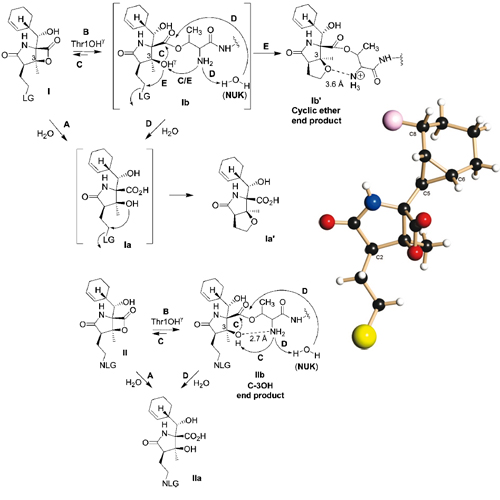Leaving Groups Prolong the Duration of 20S Proteasome Inhibition and Enhance the Potency of Salinosporamides
21-Oct-2008
J. Med. Chem., 2008, 51 Issue 21, 6711-24 published on 21.10.2008
Journal of Medicinal Chemistry, online article
Journal of Medicinal Chemistry, online article
Salinosporamide A (1 (NPI-0052)) is a potent, monochlorinated 20S proteasome inhibitor in clinical trials for the treatment of cancer. To elucidate the role of the chlorine leaving group (LG), we synthesized analogues with a range of LG potentials and determined their IC50 values for inhibition of chymotrypsin-like (CT-L), trypsin-like (T-L), and caspase-like (C-L) activities of 20S proteasomes. Proteasome activity was also determined before and after attempted removal of the inhibitors by dialysis. Analogues bearing substituents with good LG potential exhibited the greatest potency and prolonged duration of proteasome inhibition, with no recovery after 24 h of dialysis. In contrast, activity was restored after e12 h in the case of non-LG analogues. Intermediate results were observed for fluorosalinosporamide, with poor LG potential. Kinetic studies indicate that 1 acts as a classical slow, tight inhibitor of the CT-L, T-L, and C-L activities and that inhibition occurs via a two-step mechanism involving reversible recognition followed by rate-limiting formation of a covalent enzyme-inhibitor complex.











